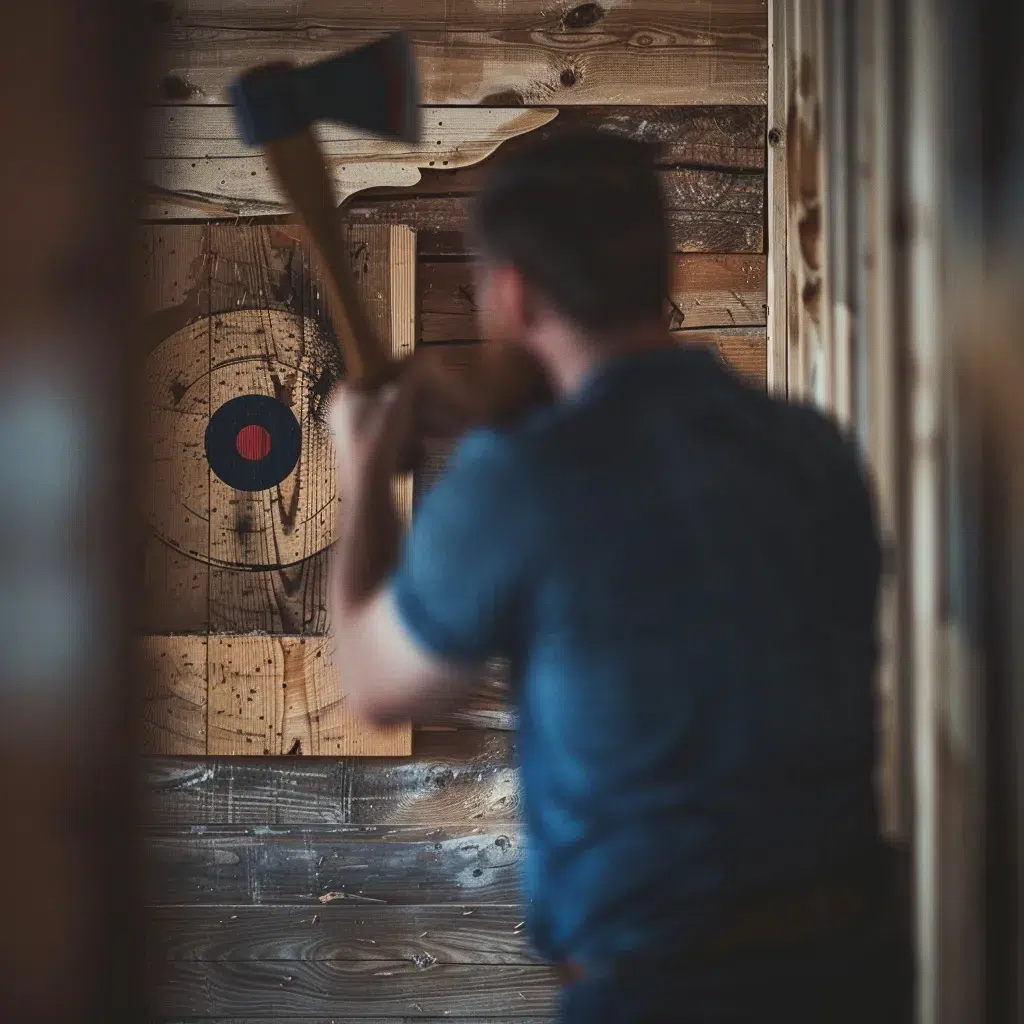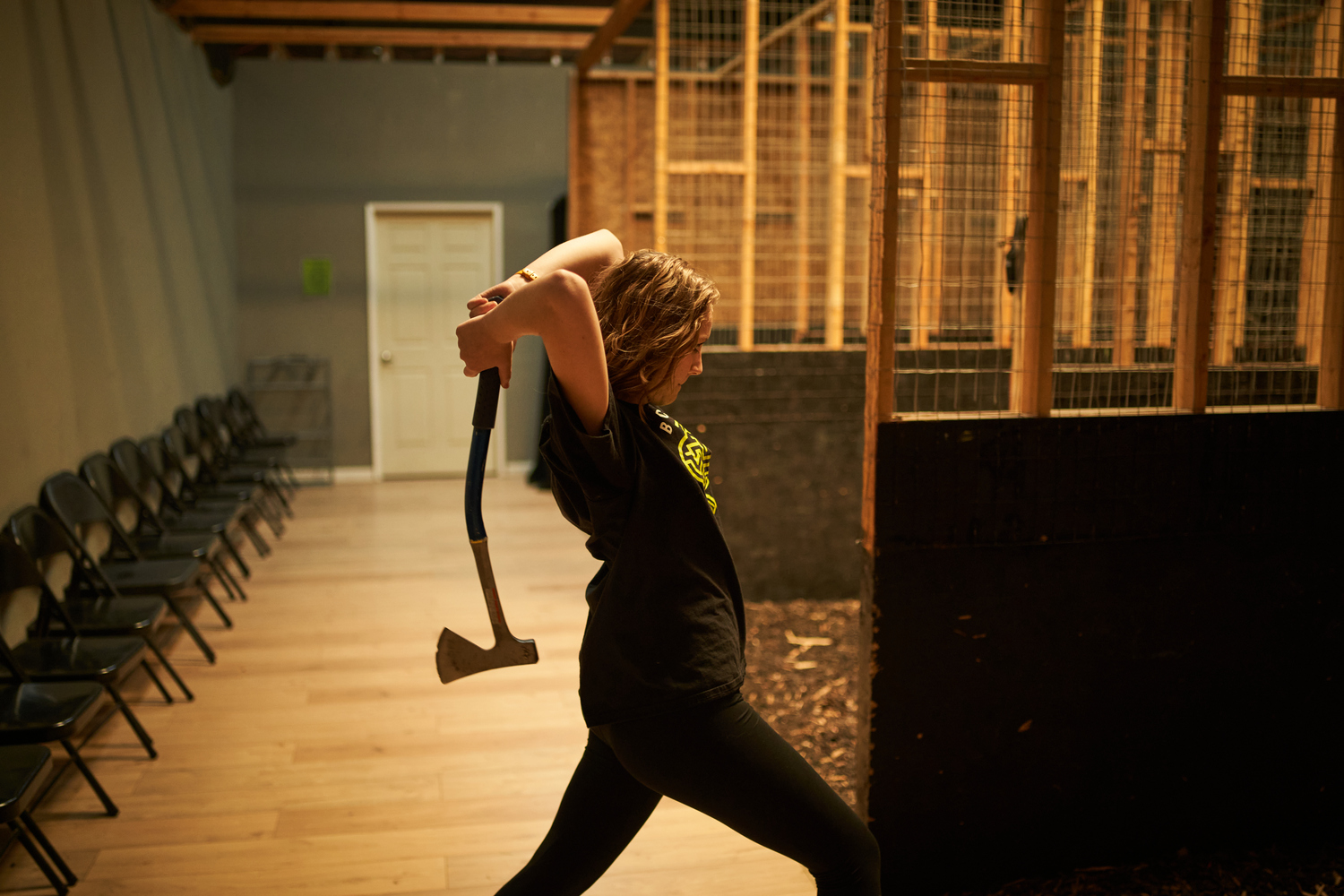Axe throwing has become a fun activity for bachelorette parties and gatherings. Many beginners wonder how to master this skill and accurately hit their target. This guide covers the basics, traditional axe throwing techniques, and essential drills to help improve your skills. Readers will learn how to set up a target properly and develop their form to ensure consistent throws. By the end, anyone can feel more confident when stepping up to the target, whether for fun or a hunting competition.
Key Takeaways
- Choosing the right axe is essential for successful axe throwing
- Safety measures create a secure environment for all participants
- A solid stance and grip enhance accuracy during throws
- Regular practice helps build confidence and improve throwing techniques
- Joining a community offers valuable feedback and learning opportunities
How to Throw an Axe: The Basics

Choosing the right axe is crucial for any axe throwing party. Understanding safety measures is essential to use this weapon effectively. The proper stance establishes a solid foundation for throwing. Beginners can learn to throw two-handed, while those seeking more advanced techniques might try one-handed throwing. Each element contributes to mastering the motion needed for successful axe throwing at any event.
What Axe Should I Use?
Choosing the right axe is fundamental for effective axe throwing. A typical axe used in the World Axe Throwing League often weighs between 1.5 to 2.5 pounds. The handle should be the appropriate length to ensure comfort for each hand, allowing fingers to grip securely for optimal control and precision during each throw.
Axe Throwing Safety
Safety plays a vital role in axe throwing, especially for beginners. When using a tomahawk or any axe, it is essential to recognize the potential risks associated with improper techniques. Ensuring that all participants maintain a safe distance from the throwing area, using proper grip techniques, and remaining aware of their surroundings will help create a secure environment. By mastering these safety practices, aspiring lumberjacks can focus on developing their throwing skill without unnecessary worry about accidents.
Axe Throwing Stance
The proper stance is key for effective axe throwing. To hit the bullseye consistently, the thrower should stand with their feet shoulder-width apart, ensuring a stable base. A good rule of thumb is to adjust the length of their stance based on personal comfort, allowing for a balanced posture that aids in delivering the axe accurately toward the target.
How to Throw an Axe Two-Handed for Beginners
To throw a hatchet two-handed, beginners should start by standing in the correct position, with feet shoulder-width apart for stability. Both hands should grasp the handle firmly but not too tightly, allowing for a smooth release. As the thrower steps forward to launch the hatchet, they will engage their whole body in the motion, which is an essential part of traditional axe throwing culture. This technique enhances accuracy and builds confidence as newcomers master their skills.
How to Throw an Axe One-Handed for More Advanced Techniques
For those looking to master one-handed axe throwing, proper technique is key. The thrower should start by standing with feet shoulder-width apart for balance. Grip the axe near the end of the handle, maintaining a firm but relaxed hold, then step forward with the opposite foot while bringing the axe overhead. This coordinated motion enhances precision and power, making one-handed throws both effective and stylish.
Understanding Traditional Axe Throwing Techniques

Effective axe throwing involves mastering several key techniques. First, understanding different grips can significantly enhance throw accuracy. Next, the importance of stance cannot be overlooked, as it provides the stability needed for effective throws. Follow-through plays a crucial role in technique and should not be neglected. Common mistakes can hinder progress while developing consistency in throws is vital for improvement. Each of these aspects forms the foundation for mastering traditional axe throwing.
Grips for Effective Throws
The grip used in axe throwing is a significant factor in achieving effective throws. Beginners should focus on holding the axe firmly near the bottom of the handle, which provides better control and stability. Practicing different grip techniques allows throwers to find what feels most comfortable, thus enhancing their overall accuracy and performance.
- Understanding the grip used in axe throwing.
- It is important to hold the axe near the bottom of the handle.
- Practice different grip techniques for improved accuracy.
Importance of Stance in Axe Throwing
The stance in axe throwing is vital for success, as it provides the balance and stability needed for accurate throws. Beginners should focus on standing with feet shoulder-width apart, which allows for better control and power when releasing the axe. A solid stance helps throwers maintain confidence and consistency, which are crucial elements for improving axe throwing skills over time.
The Role of Follow-Through in Technique
The follow-through in axe throwing is an essential aspect of achieving accuracy and consistency. After releasing the axe, the thrower should allow their arm to continue moving forward naturally. This motion helps maintain balance and ensures that the energy of the throw is directed toward the target, making it a key component for beginners to master in their axe throwing practice.
Common Mistakes to Avoid
Beginners often commit common mistakes that hinder their progress in axe throwing. One mistake is gripping the axe too tightly, which can lead to a lack of control during the throw. Another frequent error is neglecting the follow-through; not allowing the arm to continue the motion can result in inaccurate throws. New throwers can significantly improve their accuracy and overall technique by focusing on a relaxed grip and emphasizing follow-through.
How to Develop Consistency in Throws
To develop consistency in axe throwing, beginners should focus on repeating the same technique each time they throw. Practicing the stance, grip, and follow-through can help throwers build muscle memory, making throws more accurate and reliable. Keeping track of progress by noting each throw’s accuracy can provide insights into needed adjustments:
- Focus on maintaining a stable stance for every throw.
- Keep the grip relaxed to enhance control during the throw.
- Incorporate regular practice sessions to reinforce technique.
- Track performance to identify areas for improvement.
Setting Up an Axe Throwing Target

Setting up an axe throwing target requires attention to several key factors. Beginners should know the recommended dimensions for constructing an effective target, use durable materials to withstand repeated throws and ensure proper placement for optimal practice. Regular maintenance of the target is essential, as are safety considerations during construction, to create a secure and enjoyable throwing environment.
Recommended Dimensions for Target Construction
For effective axe throwing, the target dimensions are important to consider. A standard target measures 36 inches in diameter, and it should be mounted 4.5 feet from the ground to the center of the bullseye. Using layered wood, such as the end grain of softwood, helps absorb the impact of the axe, ensuring durability and making it easier for beginners to retrieve their axes after each throw.
How to Use Materials for Durability
Using layered wood is a practical approach to creating a durable axe-throwing target. Softwoods, particularly those with an end grain, absorb impact well, reducing damage over time. Constructing the target with materials like pine or cedar not only withstands repeated throws but also allows easier retrieval of the axes after each use, making it more enjoyable for beginners.
Placement of Target for Optimal Throwing Practice
When setting up an axe throwing target, proper placement is key to maximizing practice. The target should be situated at least 10 to 15 feet from the thrower, allowing ample space for a safe and effective throwing experience. Ensuring the target is level and stable will help beginners build confidence as they aim for their throws, making the practice more enjoyable and productive.
Maintenance Tips for Your Target
Regular maintenance is key to ensuring the longevity of an axe-throwing target. Checking for signs of wear, such as deep cuts or missing pieces, helps maintain its effectiveness. Additionally, replacing damaged sections promptly keeps the target functional and safe for practicing throwing techniques, allowing beginners to refine their skills without interruption.
Safety Considerations When Building Targets
When building an axe-throwing target, safety should always be a top priority. Sturdy materials and a stable target are essential to prevent accidents during throws. Installing the target away from crowded areas and securing it properly will create a safer environment for everyone involved in the axe-throwing practice.
- Use sturdy materials for construction.
- Ensure the target is secure and stable.
- Install the target away from crowded areas.
Conclusion
Mastering traditional axe throwing techniques is essential for beginners to ensure both safety and success in the sport. Focusing on the right stance, grip, and follow-through can significantly enhance accuracy and confidence. Regular practice and participation in drills, along with seeking feedback from experienced throwers, will aid in developing consistent skills. Embracing these techniques fosters improvement and deepens the enjoyment of axe throwing as a rewarding and engaging activity.

